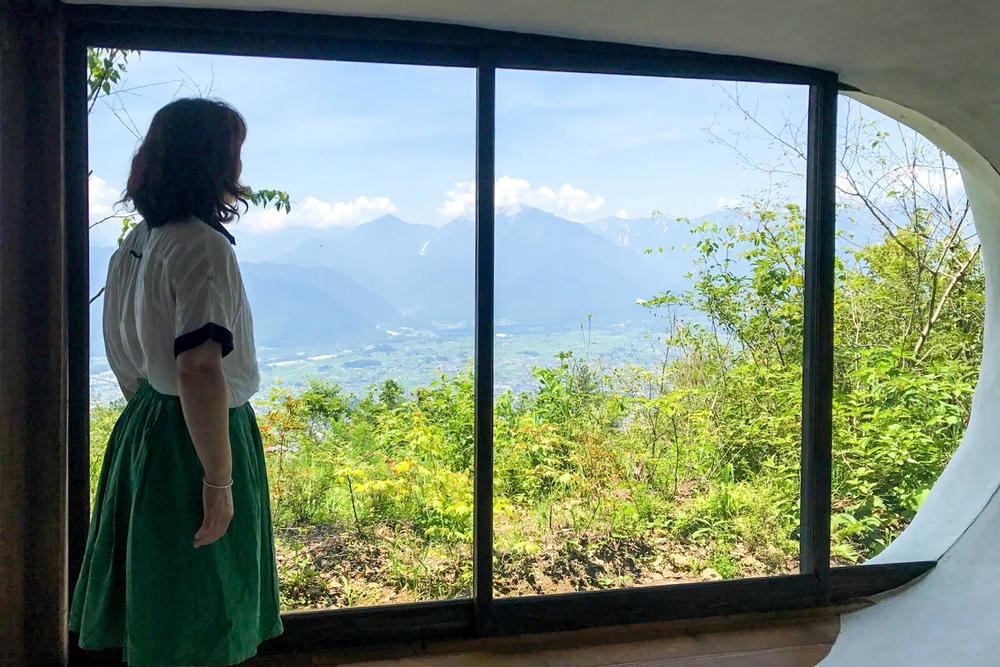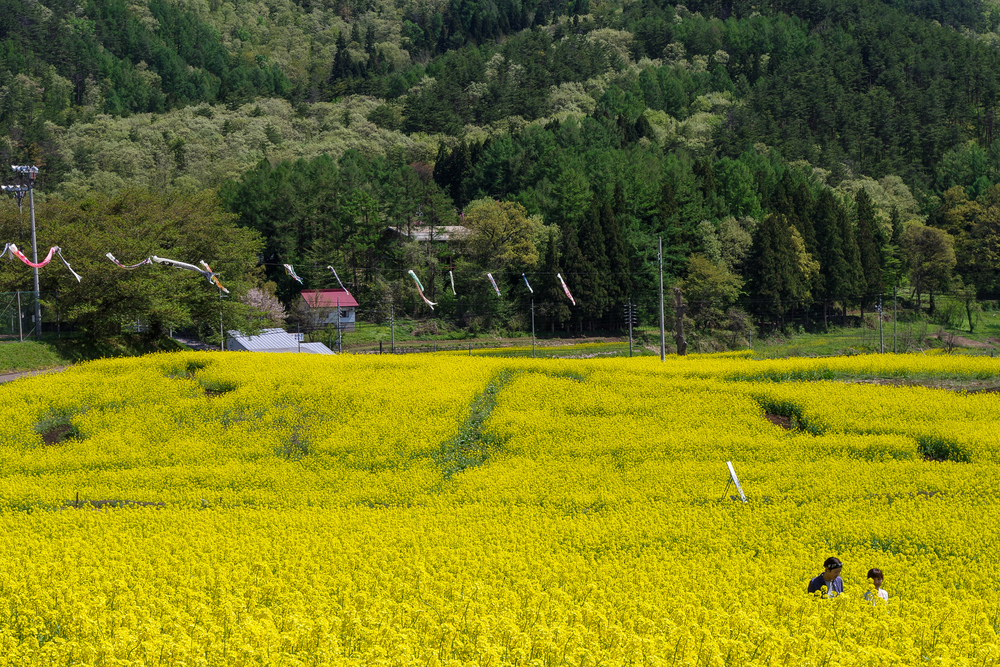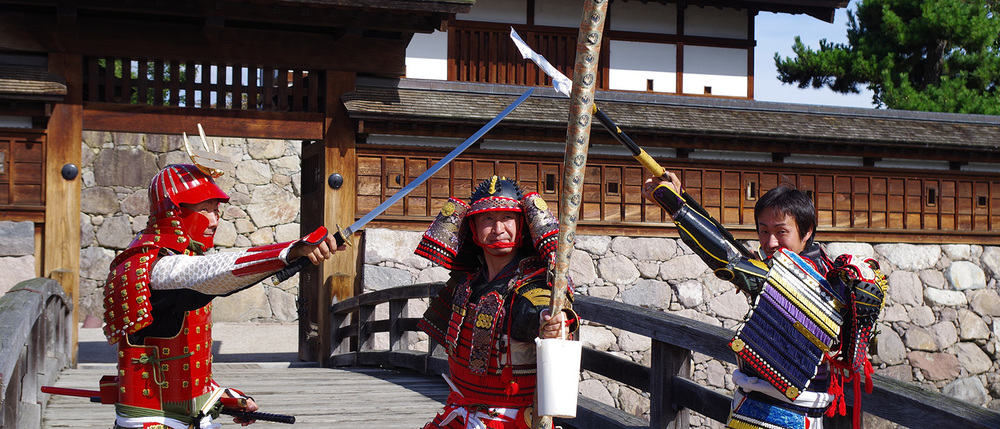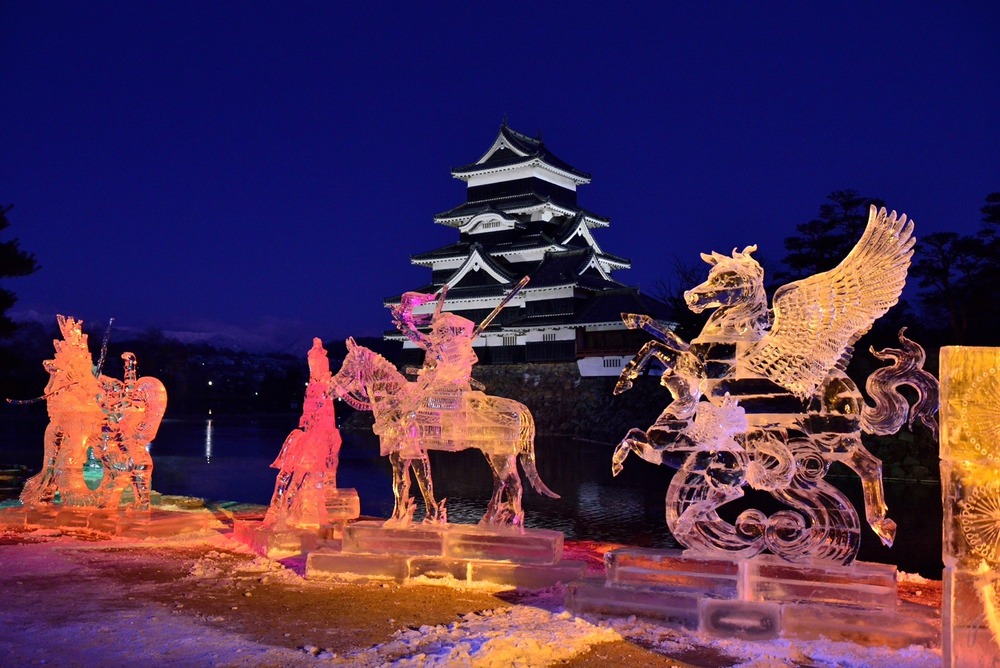Festivals in Nagano

Enjoy fireworks displays, taiko performances, ancient festivals and more around Nagano.
Festivals are a quintessential experience of Japanese culture. Take in the atmosphere, filled with music, dance and food, and interact with the locals.
There are lots of great festivals all around Japan, and Nagano is no exception. From fiery festivals in the dead of winter to mid-summer musical performances, here are some of the most popular to check out during your trip.
Festivals in Nagano
Annual Festivals
Nozawa Onsen Fire Festival
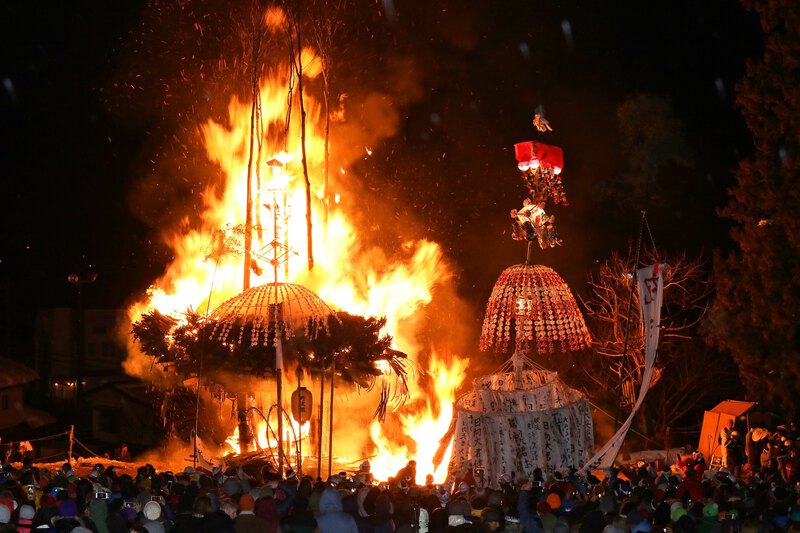
This dangerous and exciting festival is held annually on January 15th in the village of Nozawa Onsen. It is deeply rooted in ancient animistic beliefs, celebrating births, ensuring happy marriages, and ridding the world of evil spirits.
The festival starts with 42-year-old men chanting to the dosojin guardian deities atop a makeshift shrine guarded by 25-year-old men. These ages are considered the unluckiest, and so, they must be purified. Other villagers bearing torches race towards the wooden shrine, attempting to light it on fire. The older men sit atop the shrine while the younger men fend off their attackers. After a while, everyone gets off, and the structure goes up in a glorious blaze.
Only villagers can participate in the ceremony, and visitors must watch from a distance.
Learn More
Nozawa Onsen Fire Festival details
Nagano Lantern Festival (Nagano Tomyo Matsuri)
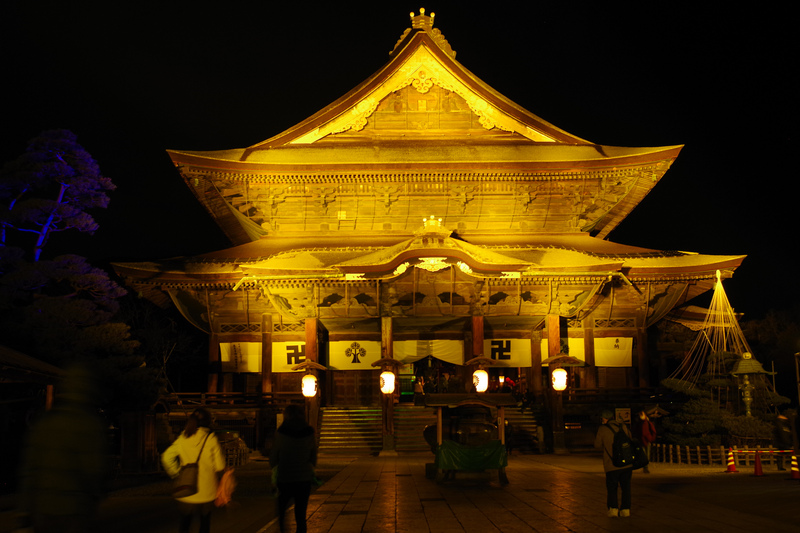
The Nagano Lantern Festival is held each year in mid-February in commemoration of the 1998 Nagano Winter Olympics. It takes place around Nagano City’s Zenkoji Temple, whose temple bell announced the start of the games’ opening ceremony.
Beautiful lanterns designed by professionals and children display an impressive array of themes and designs on the main street leading up to the temple. And the highlight of the festival is the temple itself, lit up in a spectacular display of colors. This festival is sure to brighten up your trip to Nagano!
Learn More
Nagano Lantern Festival details
Suwa Fireworks Festival
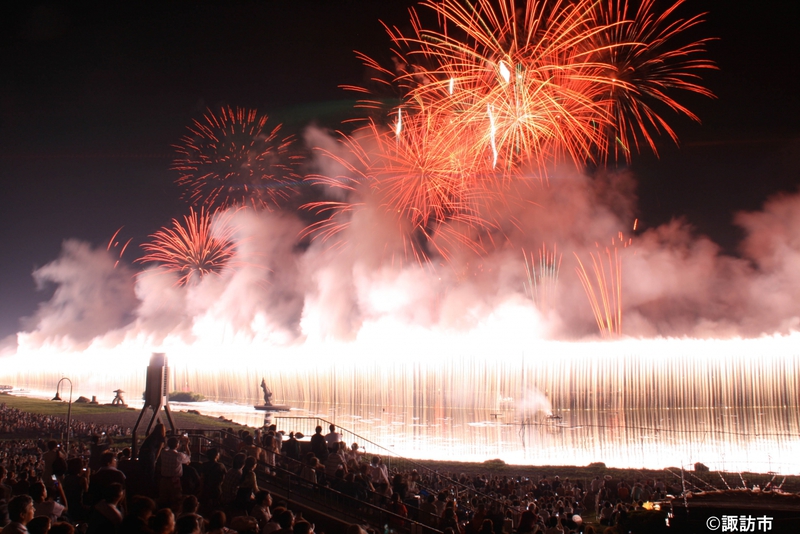
The Suwa Fireworks Festival, held every year on August 15th, is the largest of its kind in Japan. During the event, over 40,000 fireworks are set off from around Lake Suwa for an audience of over 500,000.
The Suwa area is a perfect location for such a spectacle. The reflections of the illuminated night sky in the lake are stunning, and the surrounding mountains echo the explosive sounds of the fireworks, sending vibrations through your whole body.
Those who can’t make the festival, don’t fret: 15-minute fireworks displays are held daily for several weeks in August. And in September, Suwa holds another fireworks event: the Suwa Experimental Fireworks Festival.
How did Japan’s largest fireworks festival begin? It started in 1949, when citizens, looking towards a brighter future, sought a way to lighten peoples’ spirits after the war.
Learn More
Suwa Fireworks Festival details
Okaya Taiko Festival
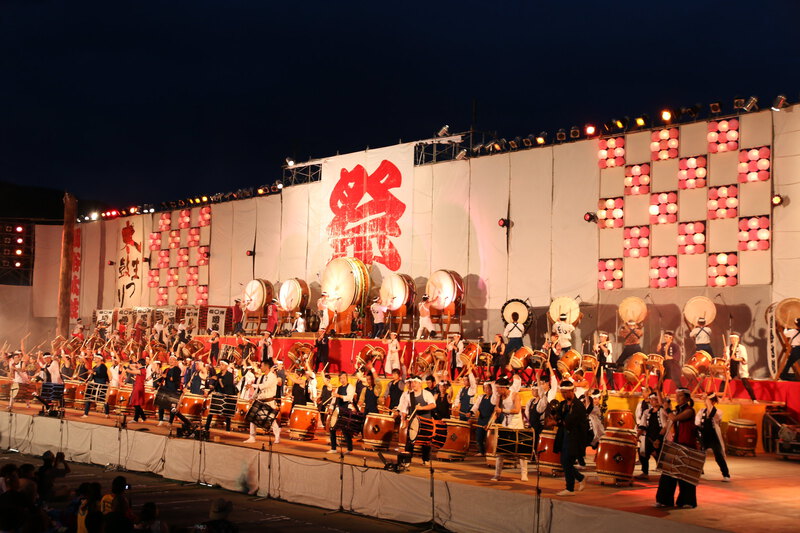
The Okaya area of Suwa has a long history of taiko drumming, which is closely tied to the Shinto beliefs of the Suwa Taisha Shrine. These taiko performances were so inspiring, it is said, that the warlord Takeda Shingen utilized them during the Battle of Kawanakajima to motivate his men.
During the two days of the Okaya Taiko Festival in mid-August, local taiko enthusiasts and groups from all over Japan perform on the traditional drums. Many of the performances include dancing, theatrics, and pyrotechnics.
Among these many performances, the most thrilling is when 300 drummers take to the stage at once, shaking both heaven and earth with their thunderous beats.
Learn More
Okaya Taiko Festival on the Visit Matsumoto website
Okaya Taiko Festival homepage (Japanese)
Seiji Ozawa Matsumoto Festival
Classic music lovers will not want to miss this festival held from mid-August to early September. The festival was founded in 1992 by the world-renowned conductor Seiji Ozawa, who served as conductor for many orchestras, including the San Francisco Symphony, the Toronto Symphony Orchestra and the Boston Symphony Orchestra.
Alongside the resident Saito Kinen Orchestra, guest artists and orchestras perform. This is a popular event, so tickets for concerts should be purchased in advance.
Learn More
Seiji Ozawa Matsumoto Festival Official English Website
Shimotsuki Matsuri

In remote Toyamago, the Shimotsuki Matsuri is held in December before the winter solstice. The festival marks the start of the snowfall and the long nights ahead. This festival started over 800 years ago and combines elements of Buddhism and Shinto.
The most prominent part of the festival is called the Yudate. Water from the river is sanctified and boiled. The water vapor rising from the cauldron represents a bridge between heaven and earth, allowing the gods to travel freely between worlds. Villagers wear masks called omote to imitate the gods, petitioning them to keep away disaster, injury, and disease. Finally, villagers send off the gods with a combination of traditional Shinto dances and songs.
Rumor has it that Hayao Miyazaki found inspiration from Shimotsuki Matsuri for the anime film Spirited Away.
Learn More
Shimotsuki Matsuri Official English Website
Special Festivals
Gokaicho
©Zenkoji
Once every seven years, Zenkoji Temple hosts the Gokaicho Festival. During the 6th century, monks brought the first Buddha statue to Japan, and according to legend, it remains hidden in Zenkoji Temple. A replica of this statue was made over a thousand years ago and is only brought out during the Gokaicho Festival.
The festival runs from early April to June, with significant events throughout. A notable event is the ekobashira, a sacred pillar standing in the main hall that leads to the original statue kept in the innermost sanctuary. Visitors can touch this pillar to connect with the Buddha.
Learn More
Gokaicho Official Website (Japanese)
The Onbashira Festival

The Onbashira festival is held once every seven years in the Lake Suwa area in April and May.
Onbashira is an honorific word for the 17- to 19-meter-high pillars that surround the four shrines of Suwa Taisha. Every seven years, these 16 pillars, which weigh approximately 7.5 tons each, are replaced—entirely by hand.
Over the course of the festival, the pillars are brought down from the mountain, moved through town and eventually erected in place at each shrine. The ultimate highlight of the festival is Kiotoshi, where courageous participants ride the pillars down steep slopes. It is incredibly tough—and sometimes dangerous—work, but it is an important part of locals’ lives that they spend years preparing for.
Learn More
Onbashira Official English Website
A Look at the 2016 Onbashira Festival
Update:2022/03/25


